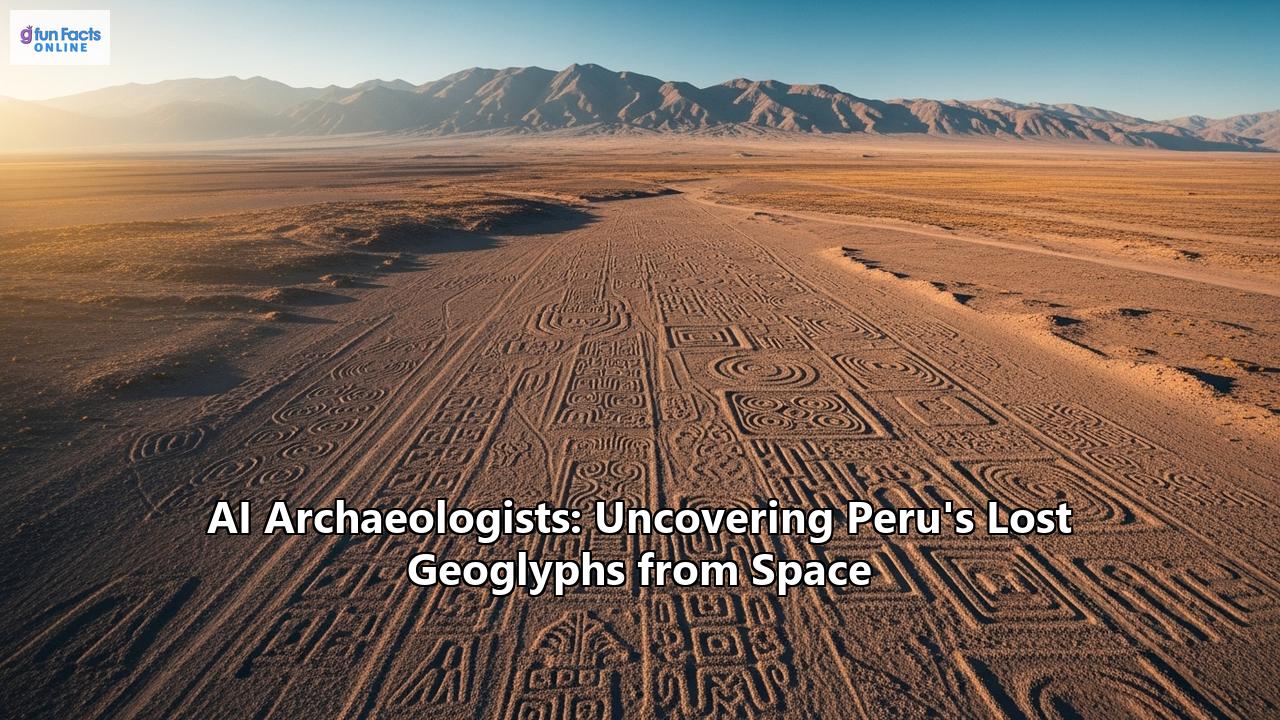In the sun-scorched expanse of southern Peru's Nazca Desert, a landscape etched with mystery has held its secrets for two millennia. The Nazca Lines, a series of colossal geoglyphs carved into the arid ground, have long captivated the human imagination. These enormous designs, depicting everything from animals and plants to complex geometric shapes, were created between 500 BC and 500 AD by the ancient Nazca civilization. So vast are these figures that their true forms can only be fully appreciated from the sky, a fact that has fueled endless speculation about their purpose since their rediscovery in the 1920s. Designated a UNESCO World Heritage Site in 1994, the Nazca Lines stand as a testament to the ingenuity of a pre-Incan culture.
A New Era of Discovery Dawns
For nearly a century, archaeologists have painstakingly cataloged these desert drawings, identifying around 430 figures. But in a groundbreaking turn of events, a collaboration between researchers from Japan's Yamagata University and scientists from IBM Research has nearly doubled the number of known geoglyphs in a remarkably short period. Leveraging the power of artificial intelligence, the team has uncovered 303 previously unknown geoglyphs, heralding a new era in the study of this ancient wonder.
The Power of the Digital Eye
The challenge of studying the Nazca Lines has always been their sheer scale and the subtlety of the markings. The geoglyphs are spread across approximately 450 square kilometers (about 170 square miles) of arid plateau, and many have been weathered by time, making them difficult to spot with the naked eye. Traditional methods of discovery, relying on ground surveys and the manual review of aerial photographs, were slow and laborious processes that risked overlooking fainter designs.
This is where artificial intelligence has become a game-changer. The research team employed a sophisticated deep learning model, training it on high-resolution images of previously known geoglyphs. The AI then scoured vast amounts of geospatial data from satellites, airplanes, and drones, analyzing the landscape with a speed and precision far exceeding human capabilities. The AI model proved to be 20 to 21 times faster than conventional methods, identifying potential new geoglyphs in just six months—a feat that would have taken archaeologists decades to accomplish. After the AI flagged thousands of potential sites, human experts conducted field surveys to verify the findings, confirming the existence of 303 new figurative geoglyphs and 42 geometric ones.
A Gallery of Newly Unveiled Figures
The newfound geoglyphs offer a richer and more nuanced understanding of Nazca culture. They fall into two main categories: large "line-type" geoglyphs, similar to the iconic figures already known, and smaller, more intricate "relief-type" geoglyphs. The line-type figures primarily depict wild animals like birds and monkeys.
In contrast, the relief-type geoglyphs, which are often harder to detect, feature a wider array of subjects, including human-like figures, decapitated heads, and domesticated animals like llamas and alpacas. One of the most striking discoveries is a 72-foot-long (22-meter) geoglyph of an orca holding a knife. This powerful image resonates with scenes found on Nazca pottery that depict orcas involved in human sacrifice, underscoring the deep ritualistic significance of these desert drawings.
Rethinking the Purpose of the Lines
The discovery of these new figures, and particularly their locations, is shedding new light on the enduring mystery of why the Nazca Lines were created. For decades, theories have ranged from astronomical calendars to guides for celestial navigation or even messages to alien visitors. More recent research has suggested a connection to water rituals—a critical concern in the arid environment.
This latest trove of discoveries adds a new layer to the discussion. Many of the smaller, newly identified relief-type geoglyphs are situated near ancient footpaths that crisscross the desert. This placement suggests they may have been created to be seen by individuals or small groups of travelers, possibly serving as markers for rituals or sharing information. The larger, line-type figures, on the other hand, are thought to have been used for large, community-level ceremonies.
The Future of Archaeology is Here
This AI-powered project in Peru is a landmark achievement, showcasing the transformative potential of technology in archaeological research. By processing massive datasets, AI can identify patterns and anomalies that might otherwise go unnoticed, all while being a non-invasive exploration method that preserves the integrity of fragile sites.
The success at Nazca is just the beginning. Researchers believe there could be hundreds more geoglyphs awaiting discovery in the desert. As AI technology continues to evolve, it promises to accelerate the pace of archaeological discovery worldwide, unlocking more secrets of ancient civilizations and helping us to piece together the vast, complex puzzle of human history. The partnership between the discerning eye of the archaeologist and the immense processing power of AI has opened a thrilling new chapter in our quest to understand the past.
Reference:
- https://www.capitol.ai/story/dc751ca0-52cf-4719-ad50-a87e033ff8ef
- https://caliber.az/en/post/ai-takes-flight-over-peru-303-new-nazca-geoglyphs-discovered
- https://www.japantimes.co.jp/news/2024/09/25/japan/science-health/yamagata-university-nazca-lines/
- https://www.yamagata-u.ac.jp/en/information/info/20240924/
- https://www.history.com/articles/nazca-lines
- https://www.ndtv.com/science/artificial-intelligence-uncovers-300-new-nazca-lines-including-knife-wielding-orca-6643270
- https://www.dlr.de/en/eoc/latest/news/2024/accelerated-discovery-nasca-geoglyphs-by-ai
- https://archaeologymag.com/2024/09/ai-uncovers-303-new-nazca-geoglyphs-in-peru/
- https://indianexpress.com/article/explained/explained-sci-tech/ai-nazca-geoglyphs-peru-9702610/
- https://www.theartnewspaper.com/2025/04/14/how-ai-models-are-helping-archaeologists-to-find-new-sites-faster
- https://www.bbc.co.uk/newsround/articles/cpqzv3j2xj1o
- https://www.intellinews.com/ai-uncovers-over-300-new-nazca-geoglyphs-in-peru-revealing-ancient-mysteries-345139/
- https://san.com/cc/ai-uncovers-hundreds-of-new-nazca-geoglyphs-in-breakthrough-discovery/
- https://www.vipac.travel/uncover-new-ancient-mysteries-in-nazca-with-over-300-newly-revealed-geoglyphs
- https://www.thearchaeologist.org/blog/artificial-intelligence-solves-one-of-archaeologys-greatest-mysteries

